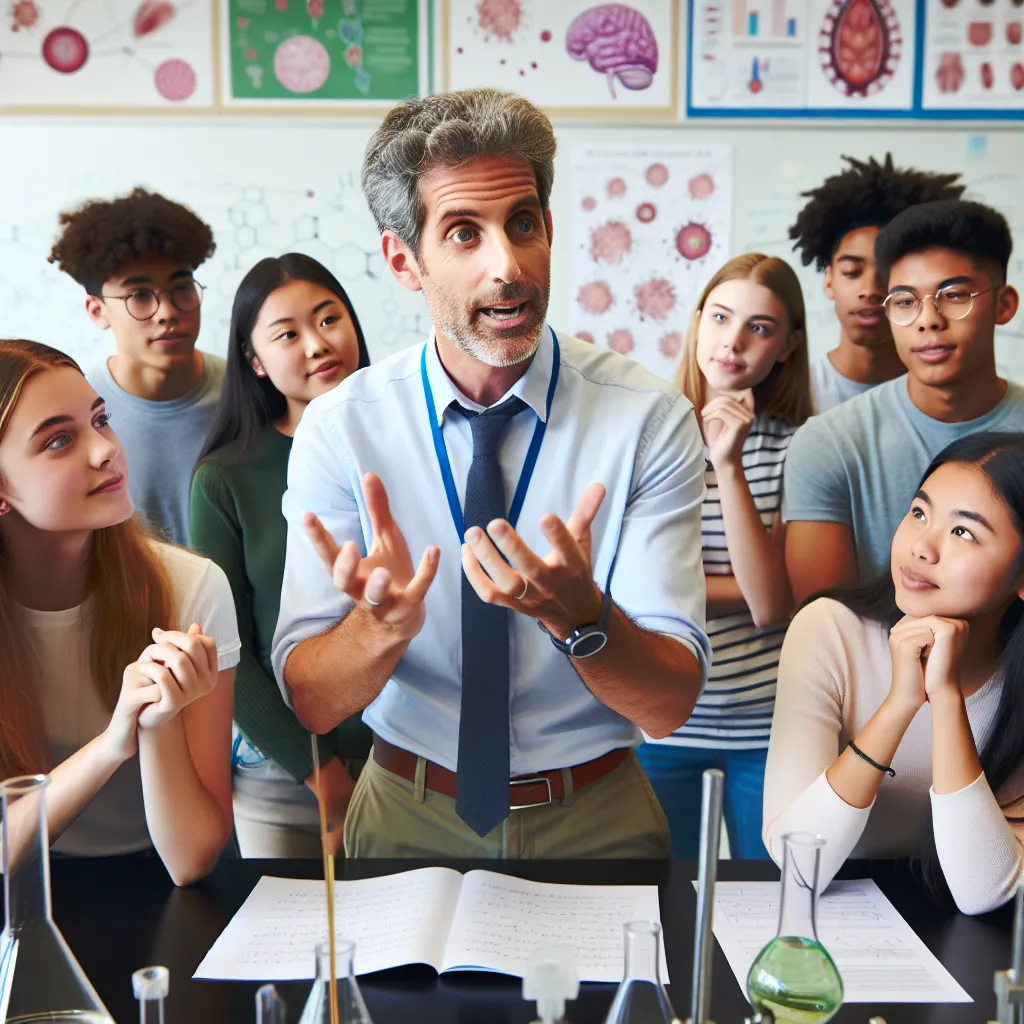When it comes to the IELTS Speaking test, one common topic that candidates may encounter is describing a place that left a lasting impression. This topic allows examiners to assess your ability to recount personal experiences, use descriptive language, and express emotions. In this article, we’ll explore how to tackle this topic effectively, providing sample answers and valuable tips to help you achieve a high band score.
Nội dung bài viết
- Understanding the Topic
- Part 1: Introduction and Interview
- Sample Question 1: Do you like visiting new places?
- Sample Question 2: What type of places do you like to visit?
- Part 2: Long Turn
- Cue Card
- Sample Answer (Band 8-9)
- Examiner’s Follow-up Questions
- Part 3: Two-way Discussion
- Question 1: How do you think technology has changed the way we experience new places?
- Question 2: Do you think people’s attitudes towards travel have changed in recent years?
- Key Vocabulary and Phrases for High Scores
- Tips from an IELTS Speaking Examiner
Understanding the Topic
Before we dive into the specifics, it’s important to understand what the examiner is looking for when they ask you to describe a place that left a lasting impression. They want to hear about:
- A specific location you visited
- Why it made such an impact on you
- Vivid descriptions of the place
- Your feelings and reactions to the experience
This topic has been a recurring theme in IELTS Speaking tests and is likely to remain relevant in future exams due to its versatility and ability to elicit a range of language skills.
 IELTS Speaking Test
IELTS Speaking Test
Part 1: Introduction and Interview
In Part 1 of the Speaking test, you may be asked some general questions about places and travel. Here are some potential questions and sample answers:
Sample Question 1: Do you like visiting new places?
Band 6-7 Answer:
“Yes, I really enjoy visiting new places. It’s always exciting to experience different cultures and see new sights. I try to travel to a new destination at least once a year if I can.”
Band 8-9 Answer:
“Absolutely! I’m passionate about exploring new destinations. There’s something incredibly invigorating about immersing myself in unfamiliar cultures and broadening my horizons. I make it a point to venture to at least one new location annually, as I believe travel is an invaluable form of education.”
Sample Question 2: What type of places do you like to visit?
Band 6-7 Answer:
“I prefer visiting places with beautiful natural scenery. Mountains and beaches are my favorites because I find them relaxing and inspiring. I also enjoy cities with interesting architecture and history.”
Band 8-9 Answer:
“I’m particularly drawn to destinations that offer a harmonious blend of natural beauty and cultural richness. Places with awe-inspiring landscapes, such as majestic mountain ranges or pristine coastlines, resonate deeply with me. Equally, I’m fascinated by urban environments that boast architectural marvels and a palpable sense of history. These diverse settings provide a multifaceted experience that I find both intellectually stimulating and emotionally fulfilling.”
Part 2: Long Turn
In this section, you’ll be given a cue card with a topic to speak about for 1-2 minutes. Here’s a sample cue card related to our main topic:
Cue Card
Describe a place you visited that left a lasting impression on you.
You should say:
- Where the place was
- When you visited it
- What you did there
- And explain why it left a lasting impression on you
Sample Answer (Band 8-9)
“I’d like to talk about a place that profoundly impacted me – the ancient city of Petra in Jordan, which I had the privilege of visiting last summer. This archaeological wonder, often referred to as the ‘Rose City’ due to the distinctive hue of its rock-cut architecture, surpassed all my expectations.
Upon arriving, I was immediately struck by the dramatic entrance through the Siq, a narrow gorge flanked by towering cliffs. As I emerged from this natural corridor, I was greeted by the breathtaking sight of the Treasury, Petra’s most famous monument. Its intricate facade, carved directly into the rose-red cliff face, was truly awe-inspiring.
During my visit, I spent hours exploring the vast complex, marveling at the ingenious water conduit system and climbing to the Monastery, which offered panoramic views of the surrounding landscape. I also had the unique opportunity to experience Petra by night, where the ancient city was illuminated by thousands of candles, creating an ethereal atmosphere that was nothing short of magical.
Petra left a lasting impression on me for several reasons. Firstly, the sheer scale and sophistication of the architecture, considering it was built over 2,000 years ago, was mind-boggling. It served as a humbling reminder of human ingenuity and the remarkable achievements of ancient civilizations.
Moreover, the juxtaposition of the man-made structures against the rugged natural beauty of the desert landscape created a visual spectacle that was utterly mesmerizing. The play of light and shadow on the rose-colored rocks throughout the day added an extra dimension to the experience, making each moment feel unique and special.
Lastly, Petra resonated with me on a deeper level, evoking a sense of connection to history and inspiring a profound appreciation for cultural heritage. It reinforced my belief in the importance of preserving such sites for future generations and sparked a renewed interest in ancient history and archaeology.
In conclusion, my visit to Petra was transformative, leaving an indelible mark on my memory and igniting a passion for exploring more of the world’s hidden wonders.”
Examiner’s Follow-up Questions
- How do you think tourism affects places like Petra?
- Do you believe it’s important to preserve historical sites? Why or why not?
Sample Answer (Band 8-9):
“Tourism can be a double-edged sword for historical sites like Petra. On the positive side, it brings in crucial revenue that can be used for conservation efforts and local development. It also raises global awareness about the importance of these sites, potentially garnering support for their preservation.
However, mass tourism can pose significant threats to delicate archaeological sites. The sheer volume of visitors can lead to physical erosion of ancient structures, while improper behavior or lack of respect from some tourists can cause damage. There’s also the risk of over-commercialization, which could detract from the authenticity of the site.
Regarding the importance of preserving historical sites, I believe it’s absolutely crucial. These sites are tangible links to our past, offering invaluable insights into human history, culture, and technological progress. They serve as educational resources, allowing us to learn from previous civilizations and understand our own cultural evolution.
Moreover, historical sites often play a significant role in national and cultural identity. They can be sources of pride and unity for local communities and nations. From a global perspective, preserving these sites ensures the continuity of human heritage and promotes cross-cultural understanding.
Additionally, many historical sites, like Petra, are irreplaceable wonders. Once lost or damaged, they can never be fully restored. Therefore, their preservation is not just about maintaining physical structures, but about safeguarding knowledge, artistry, and cultural legacies for future generations.
In conclusion, while managing tourism at historical sites presents challenges, I believe the benefits outweigh the risks if managed responsibly. The preservation of these sites is paramount for educational, cultural, and humanitarian reasons, making it a collective responsibility of the global community.”
Part 3: Two-way Discussion
In this section, the examiner will ask you more abstract questions related to the topic. Here are some potential questions and sample answers:
Question 1: How do you think technology has changed the way we experience new places?
Band 6-7 Answer:
“Technology has greatly changed how we experience new places. We can now use apps for navigation, translation, and finding recommendations. Virtual tours also allow us to see places before we visit them. However, some people think technology can make travel less authentic.”
Band 8-9 Answer:
“Technology has revolutionized our approach to experiencing new places in multifaceted ways. On one hand, it has vastly enhanced accessibility and convenience. GPS-enabled smartphones have rendered traditional maps obsolete, allowing travelers to navigate unfamiliar territories with ease. Translation apps have broken down language barriers, facilitating more meaningful interactions with locals.
Moreover, the proliferation of online review platforms and travel blogs has democratized information, enabling travelers to make more informed decisions about accommodations, dining, and activities. Virtual reality and 360-degree videos now offer immersive previews of destinations, allowing for better trip planning and building anticipation.
However, this technological integration is not without its drawbacks. There’s a valid concern that over-reliance on technology might lead to a less authentic travel experience. Constantly viewing the world through a smartphone screen or following rigid, app-suggested itineraries might detract from the spontaneity and serendipity that often make travel memorable.
Furthermore, the ubiquity of social media has created a culture of ‘Instagrammable’ travel, where visitors might prioritize getting the perfect photo over genuinely engaging with the destination. This trend risks turning travel into a performative act rather than a personal, enriching experience.
In conclusion, while technology has undeniably made travel more accessible and convenient, it’s crucial to strike a balance. The key lies in leveraging technology as a tool to enhance our experiences, rather than allowing it to dictate or diminish them. Ultimately, the most fulfilling travel experiences often come from unplugging occasionally and allowing ourselves to be fully present in the moment.”
Question 2: Do you think people’s attitudes towards travel have changed in recent years?
Band 6-7 Answer:
“Yes, I think people’s attitudes towards travel have changed. More people are interested in sustainable and responsible travel now. There’s also a trend towards experience-based travel rather than just sightseeing. Social media has also influenced how people choose their travel destinations.”
Band 8-9 Answer:
“Indeed, there has been a noticeable shift in people’s attitudes towards travel in recent years, influenced by various factors including increased global awareness, technological advancements, and changing societal values.
One significant change is the growing emphasis on sustainable and responsible tourism. Travelers are becoming increasingly conscious of their environmental impact, leading to a rise in eco-friendly accommodations, carbon-offsetting programs, and a preference for destinations that prioritize conservation. This shift reflects a broader societal trend towards sustainability and ethical consumption.
Another evolving aspect is the prioritization of experiences over material possessions. Many travelers, particularly millennials and Gen Z, are opting for immersive, authentic experiences that allow them to engage more deeply with local cultures. This has led to a boom in experiential travel offerings, from cooking classes with local chefs to homestays in indigenous communities.
Social media has also profoundly influenced travel attitudes. While it has democratized travel inspiration, making lesser-known destinations more accessible, it has also created a phenomenon of ‘travel for social media’. This has both positive and negative implications, potentially encouraging over-tourism in some areas while boosting economies in others.
The concept of ‘slow travel’ has gained traction, with more people choosing to spend extended periods in one location rather than rushing through multiple destinations. This approach often leads to a more meaningful understanding of the place and its culture.
Lastly, the global pandemic has dramatically reshaped attitudes towards travel. There’s an increased focus on health and safety, a renewed appreciation for domestic travel, and a growing interest in remote, less crowded destinations.
In conclusion, travel attitudes have evolved to reflect broader societal changes, with an increasing emphasis on sustainability, authenticity, and meaningful experiences. While challenges like over-tourism and the ‘Instagram effect’ persist, these shifting attitudes also present opportunities for more responsible and enriching forms of travel.”
Key Vocabulary and Phrases for High Scores
To enhance your speaking performance, incorporate these advanced vocabulary items and phrases:
-
Awe-inspiring (adjective) /ɔː ɪnˈspaɪərɪŋ/: Extremely impressive or daunting; inspiring great admiration.
Example: “The Grand Canyon’s vast expanse is truly awe-inspiring.” -
Resonates with (phrasal verb) /ˈrezəneɪts wɪð/: To evoke a feeling of shared emotion or belief.
Example: “The artist’s message resonates with audiences worldwide.” -
Juxtaposition (noun) /ˌdʒʌkstəpəˈzɪʃn/: The act of placing two or more things side by side for comparison or contrast.
Example: “The juxtaposition of ancient ruins and modern skyscrapers created a unique cityscape.” -
Ethereal (adjective) /ɪˈθɪəriəl/: Extremely delicate and light in a way that seems not to be of this world.
Example: “The mist gave the landscape an ethereal quality.” -
Profoundly (adverb) /prəˈfaʊndli/: In a deep or intense manner; extremely.
Example: “The experience profoundly changed my perspective on life.” -
Multifaceted (adjective) /ˌmʌltɪˈfæsɪtɪd/: Having many different aspects or features.
Example: “Travel offers a multifaceted learning experience.”
Tips from an IELTS Speaking Examiner
As an experienced IELTS Speaking Examiner, I recommend the following strategies to improve your performance:
-
Practice regularly: Engage in English conversations daily, even if it’s just talking to yourself about various topics.
-
Expand your vocabulary: Focus on learning idiomatic expressions and advanced vocabulary related to travel and experiences.
-
Work on fluency: Aim for smooth delivery without long pauses. Use fillers naturally if you need time to think.
-
Develop your ideas: Don’t just list facts. Explain your thoughts and feelings to demonstrate depth in your responses.
-
Use a variety of grammatical structures: Incorporate complex sentences and different tenses to showcase your language skills.
-
Listen to native speakers: Pay attention to pronunciation, intonation, and natural speech patterns.
-
Record yourself: This helps you identify areas for improvement in your speaking.
By following these tips and using the sample answers as inspiration, you’ll be well-prepared to tackle the “Describe a place you visited that left a lasting impression” topic in your IELTS Speaking test. Remember, the key is to speak confidently, use a range of vocabulary, and provide detailed, well-structured responses.
For more IELTS Speaking practice, you might find it helpful to explore topics like describing a virtual tour that left a lasting impression or how to describe a place you would like to visit again. These related topics can help broaden your vocabulary and improve your ability to discuss travel experiences in depth.


